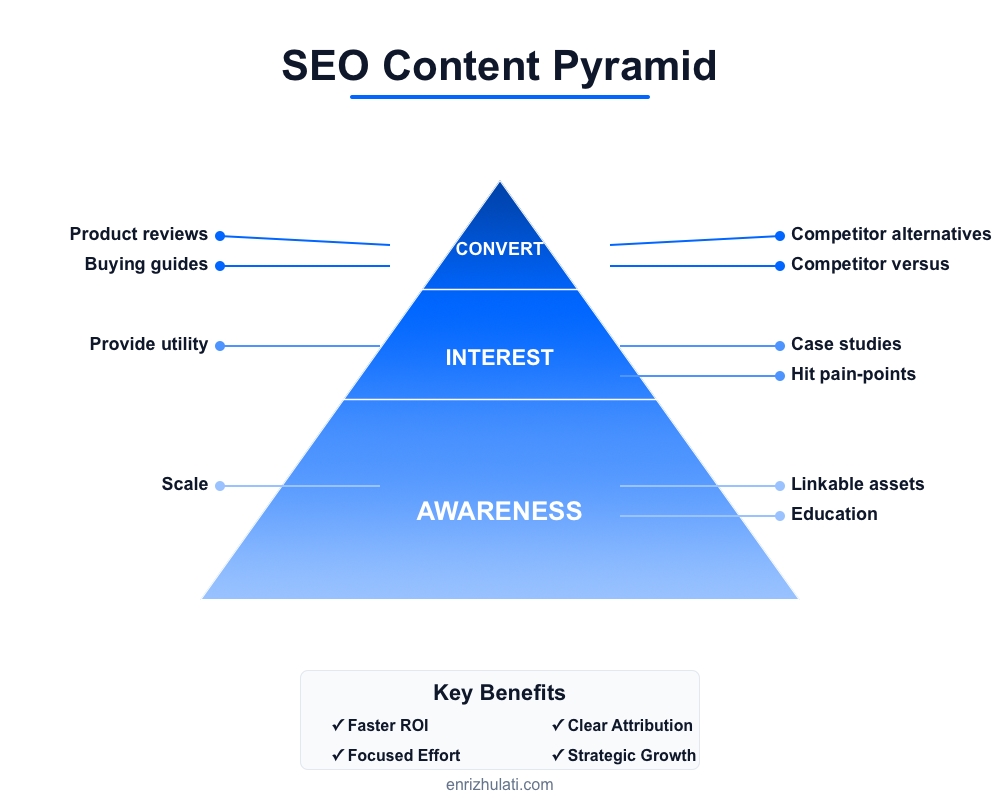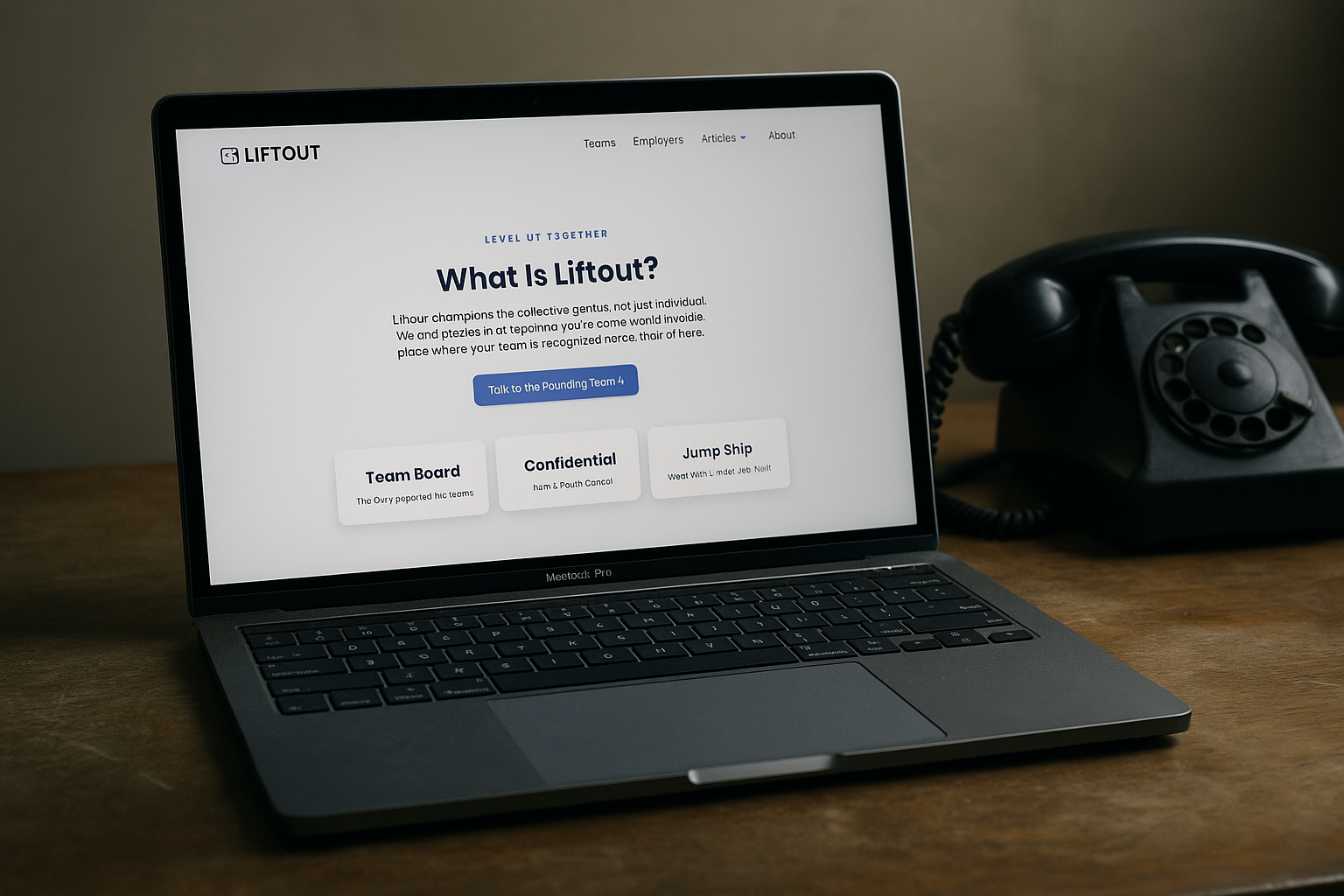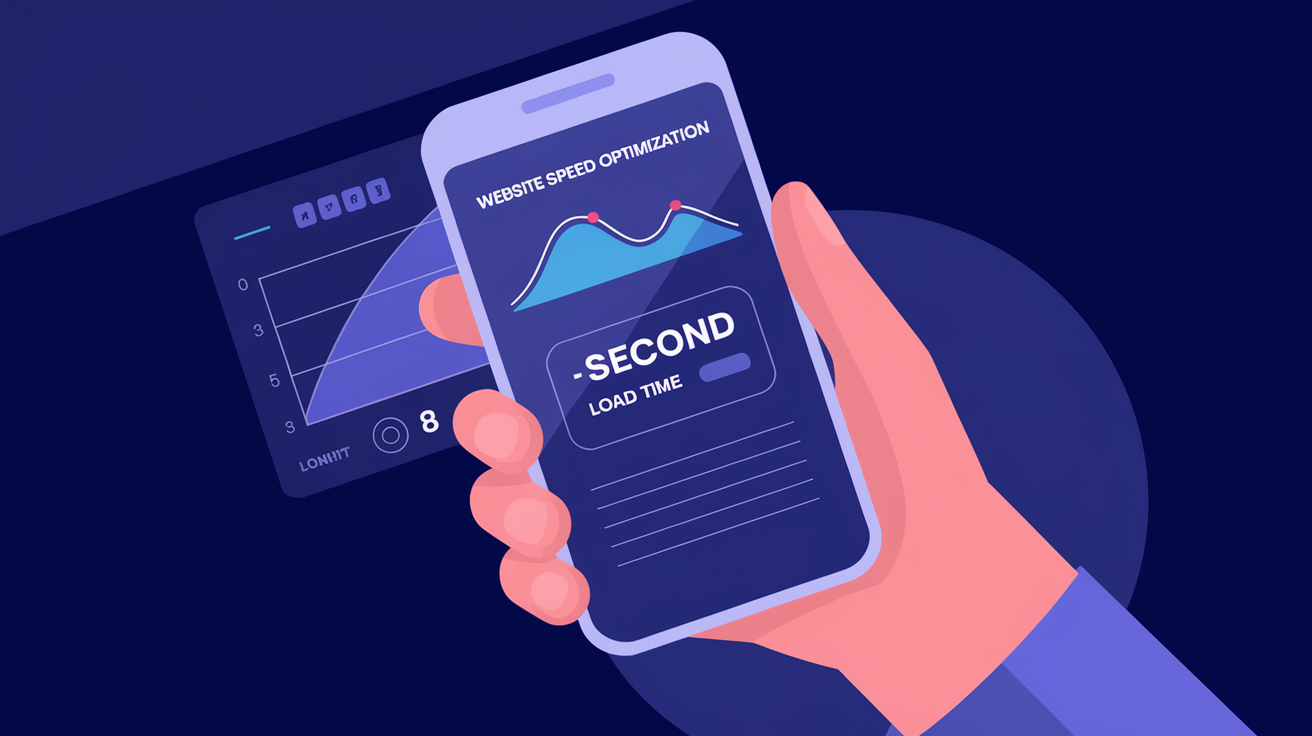SEO content pyramid content marketing framework conversion content strategy content that converts SEO strategy for small business
Your Framework for Driving Traffic and Growth That Pays
The SEO Content Pyramid framework prioritizes conversion-focused content first, helping businesses generate leads faster while building sustainable organic traffic.
 Enri Zhulati
Enri Zhulati March 21, 2025
5 min read

The SEO Content Pyramid
Building a content strategy that actually drives business results feels impossible sometimes. You've probably spent countless hours creating content that ranks nowhere, generates no leads, and feels like a massive waste of resources. I get it. The traditional content marketing approach often leads to a scattered mess of blog posts that don't convert. But there's a better way to structure your content strategy – one that prioritizes revenue while building sustainable organic traffic. In this guide, I'll show you exactly how to flip the traditional content funnel into a pyramid structure that puts conversion-focused content first. You'll learn a practical framework that doesn't just generate traffic, but actually turns that traffic into business growth.Why Traditional Content Strategies Fail
Most businesses approach content backward. They start by creating tons of awareness-level content, hoping to capture massive traffic, then sprinkle in some consideration content, with conversion content as an afterthought. The problem? This approach: Takes forever to see meaningful resultsRarely converts traffic into actual customersSpreads resources too thin across too many topicsMakes measuring ROI nearly impossible The content pyramid flips this model on its head, focusing first on what matters most – content that directly drives revenue.Understanding the SEO Content Pyramid
The content pyramid is structured in three strategic layers:1. Conversion Layer (Top Priority)
This top layer focuses on content that directly influences purchasing decisions. It targets people actively comparing solutions and ready to buy. While these keywords typically have lower search volume, they have much higher conversion potential. Examples include: Competitor alternatives: "Squarespace alternatives" or "Mailchimp alternatives"Comparison posts: "WordPress vs Webflow" or "HubSpot vs Salesforce"Product reviews: "Semrush review" or "Ahrefs review"Buying guides: "Best CRM for small business" or "Best email marketing platform" These topics directly address buyer concerns at the decision stage, helping them choose your solution over competitors.2. Interest Layer (Mid Priority)
The middle layer builds credibility and demonstrates expertise. It targets people experiencing problems your product solves but who aren't necessarily shopping for solutions yet. Examples include: Case studies: "How we increased conversion rates by 37%" or "Email marketing case study"Pain point content: "How to fix a WordPress site that's loading slowly" or "How to recover from a Google penalty"Utility content: "SEO audit templates" or "Social media calendar examples" This content establishes trust and nurtures prospects, moving them closer to conversion.3. Awareness Layer (Lower Priority)
The foundation layer builds your topical authority and attracts backlinks. While this content may not convert directly, it supports your overall SEO strategy. Examples include: Linkable assets: "Email marketing statistics" or "Social media demographics"Educational content: "What is content marketing?" or "How do search engines work?"Scalable content: Topic clusters answering common questions in your industry The key difference between this approach and traditional content marketing? You start from the top – prioritizing conversion content first – then work your way down.Implementing the Content Pyramid in Your Business
Here's how to put this framework into action:Step 1: Map Your Conversion Layer
Start by identifying your direct competitors and create: "[Competitor] vs [Your Brand]" comparisons"[Competitor] alternatives" postsProduct category "best of" lists where you can feature your solution For a website development agency, this might include: "Wix vs Custom Website Development""Squarespace Alternatives for Small Business""Best Website Solutions for E-commerce Businesses"Step 2: Develop Your Interest Layer
Identify the key pain points your customers face. For website development, these might include: "How to Speed Up Your WordPress Website""Website Redesign Case Study: Increasing Conversions by 45%""E-commerce Website Examples That Convert" Create content that demonstrates your expertise in solving these problems.Step 3: Build Your Awareness Foundation
Only after establishing your conversion and interest content should you scale into broader awareness topics: "Website Design Statistics 2025""How Much Does a Website Cost?""Benefits of Custom Website Development"Step 4: Interlink Your Pyramid
Create strategic internal linking that guides visitors from awareness content up through interest content to your conversion content.Why This Approach Works Better
The pyramid approach delivers several key advantages: Faster ROI: By prioritizing conversion content, you start generating leads and sales much sooner.Clear Attribution: It's easier to see which content directly contributes to your business goals.Focused Effort: Instead of creating content about everything, you focus on topics that directly support your business.Strategic Growth: As conversion content succeeds, you reinvest in expanding to interest and awareness content.Common Mistakes to Avoid
When implementing the content pyramid, watch out for these pitfalls: Skipping competitor research: Understanding what your competitors rank for is essential for building effective conversion content.Creating only awareness content: Many businesses get stuck producing only top-of-funnel content that never drives revenue.Neglecting internal linking: Without proper internal linking, you miss opportunities to guide users up your pyramid toward conversion.Forgetting about quality: Even conversion-focused content must provide genuine value to rank well and convert visitors.Getting Started Today
You don't need to create dozens of pieces of content to see results with this approach. Start with just 3-5 high-quality conversion pages targeting your main competitors and solutions. Focus on answering the key questions potential customers ask when comparing solutions like yours. Make these pages comprehensive, honest, and genuinely helpful. Once these pages start gaining traction, expand to your interest layer, then gradually build out your awareness foundation. By flipping the traditional content approach into a pyramid that prioritizes conversion, you'll build a content strategy that doesn't just generate traffic – it generates business results. What questions do you have about implementing the SEO content pyramid in your business? I'd love to hear your thoughts in the comments below.Continue Reading

How to Use Claude AI to Transform Your Small Business's Digital Presence
Leverage Claude AI to transform your small business online with professional content, competitor analysis, and interactive elements—without the hefty price tag.
6 min read

Push vs. Pull Marketing for Startups
Liftout was a smart idea with a working product. But we weren’t willing to do the early work that doesn’t scale — and that’s what killed it.
6 min read

Website Speed Optimization That Drives Revenue Growth
Learn which speed optimizations truly impact your bottom line and how to implement them in order of highest ROI to transform user experience and boost conversions.
7 min read